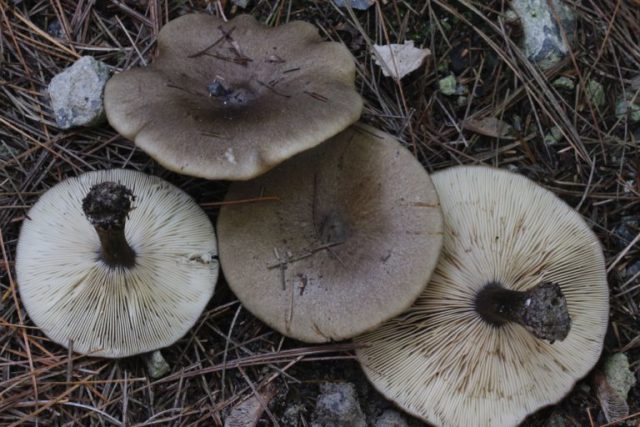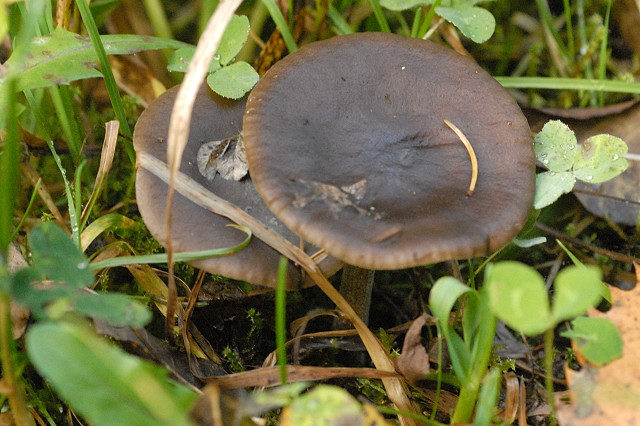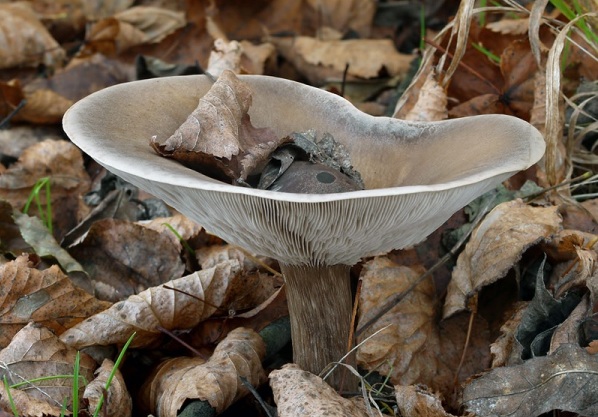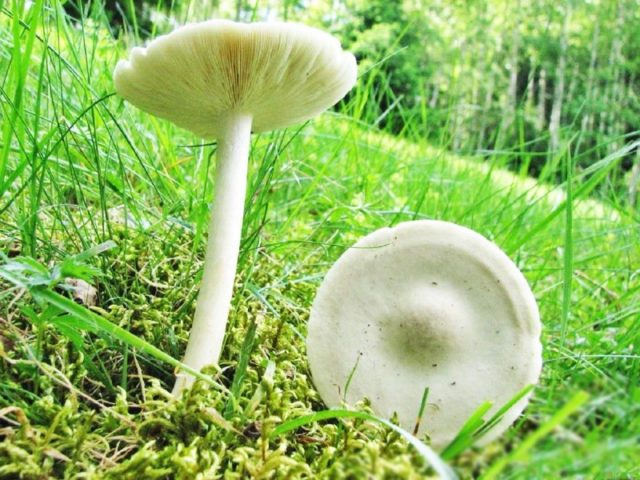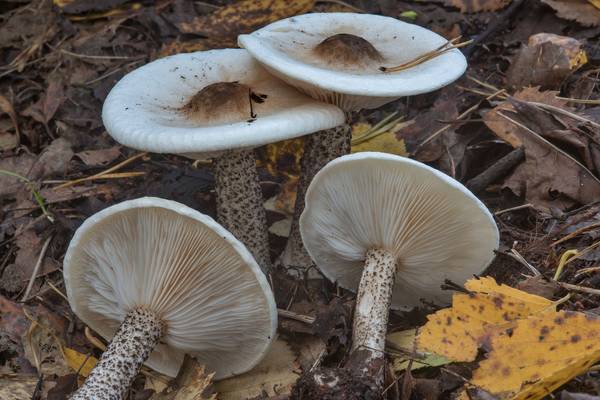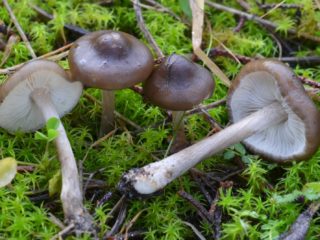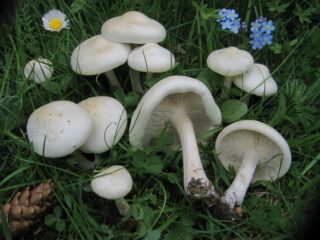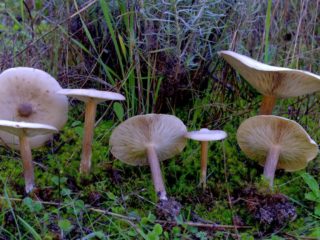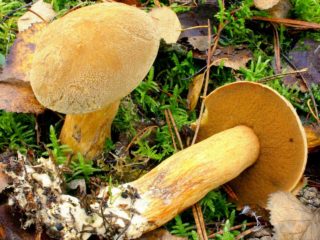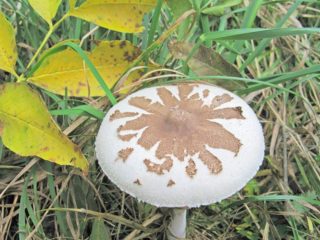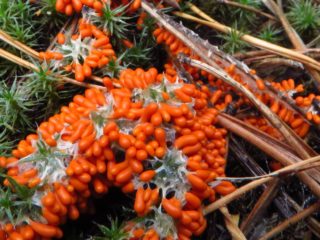Content
Melanoleuca (melanoleica, melanoleuca) is a poorly studied species of edible mushrooms, represented by more than 50 varieties. Its name comes from the ancient Greek "melano" - "black" and "leucos" - "white". Traditionally, the species is considered to be in the Ryadovkovy family, but recent DNA studies have revealed their relationship with the Pluteyevs and Amanitovs. Short-legged melanoleuca is an easily recognizable mushroom. He has external features, thanks to which it is impossible to confuse him with any other.
What do short-legged melanoleucs look like?
A compact, medium-sized lamellar mushroom that vaguely resembles a russula. The fruiting body has a characteristic imbalance of the cap and stalk. The cap is 4-12 cm in diameter, convex in young specimens, later horizontally spread with a characteristic tubercle in the middle and a wavy edge. The skin is smooth, dry, matte. Its color can be different: grayish-brown, nutty, dirty yellow, often with an olive tint; in hot dry summers it fades, becomes light gray or pale yellow. The hymenophore is represented by frequent, adherent, sandy-brown plates descending along the pedicle. The cephalic ring is missing. The stem is short (3-6 cm), rounded, tuberous at the base, longitudinally fibrous, of the same color with a cap. The pulp is soft, tender, brownish, darker and harder in the stem.
Where do short-legged melanoleucs grow?
Melanoleuca short-legged is found on all continents, but prefers regions with a temperate climate. Grows in rare forests, fields, gardens, city parks, meadows, forest edges. Short-legged melanoleuca is also found in the grass near paths and roads.
Is it possible to eat short-legged melanoleucks
The species is an edible mushroom of the 4th category, has a mediocre taste and a memorable flour smell. Among the many varieties of poisonous representatives are not found. Safe for human health.
False doubles
The fungus can be confused with other members of the species. They are colored in related tones, emitting a characteristic flour aroma. The main difference lies in the size of the leg. Common "twins" of short-legged melanoleuca are presented below.
Melanoleuca black and white (Melanoleuca melaleuca)
Melanoleuca black and white has a dark brown or reddish brown cap, reddish or ocher hue of the plate. Grows on rotten brushwood and fallen trees. Loose pulp has a sweetish taste.
Melanoleuca striped (Melanoleuca grammopodia)
The fruit body has a grayish-brown or reddish smooth cap and a dense, whitish stem with brown longitudinal fibrous stripes. The flesh is white or grayish, brownish in mature specimens.
Melanoleuca straight-footed (Melanoleuca strictipes)
The mushroom cap is smooth, whitish or creamy, darker in the middle. The plates are whitish, the leg is dense, white. It grows mainly in the hills, in the mountains.
Melanoleuca verruciated (Melanoleuca verrucipes)
The mushroom has a fleshy, whitish-yellowish cap and a cylindrical leg of the same color, covered with warts. The base of the leg is somewhat thickened.
Collection rules
Fruit bodies ripen from early summer to September. The short stem of the mushroom "sits" loosely in the ground, so it will not be difficult to remove it from there.
When collecting melanoleuca, you should follow the basic rules:
- it is advisable to go to the forest for mushrooms in the early morning, until the dew has dried;
- warm nights after heavy rains are the best weather for a good mushroom harvest;
- it is not necessary to collect rotten, overripe, withered, mechanically damaged or insect damaged specimens, since they have already begun to release toxins;
- the best container for collecting mushrooms is wicker baskets that provide free air access, plastic bags are absolutely not suitable;
- It is advisable to cut short-legged melanoleucus with a knife, but you can also gently pull it out, slightly twisting and swinging it from side to side.
Although it is a non-poisonous mushroom, you shouldn't taste it raw.
Use
Short-legged melanoleuca has a mediocre taste and low nutritional value. It is prepared in various ways - boiled, stewed, fried, salted, pickled. The mushroom does not need to be soaked before cooking as it does not contain toxins or bitter milky juice.
Conclusion
Melanoleuca short-legged is rare, growing singly or in small groups. Just like other representatives of this species, it belongs to the edible mushrooms of the lower category. A true lover of quiet hunting will appreciate the sweet, mealy taste.

